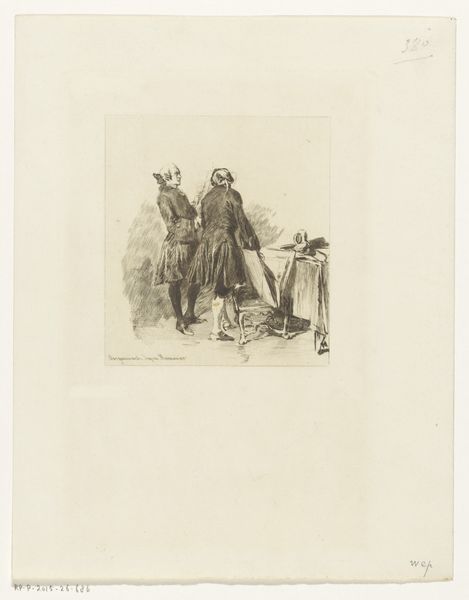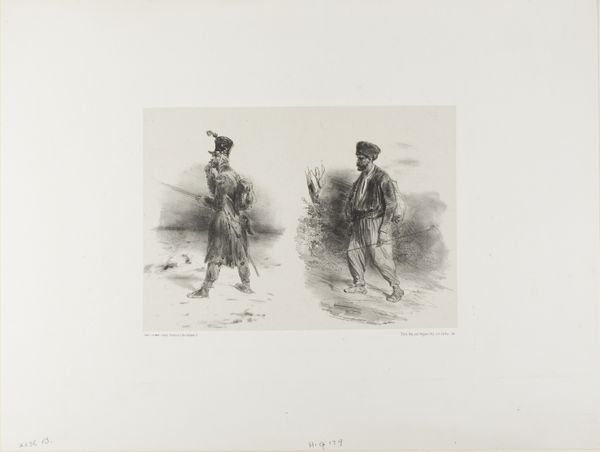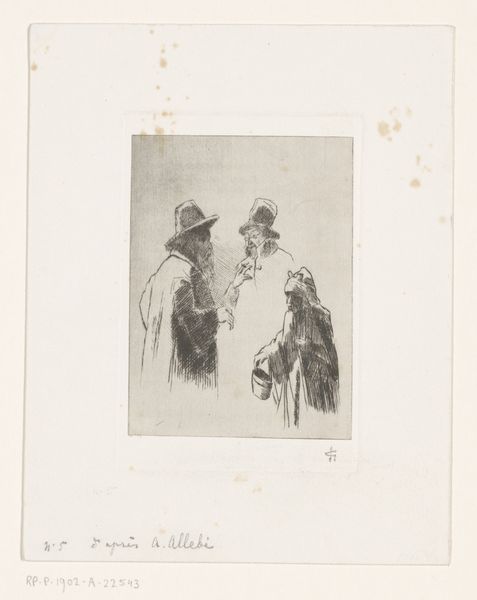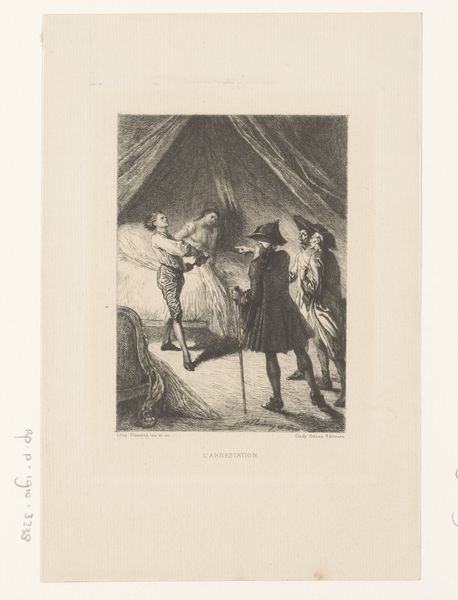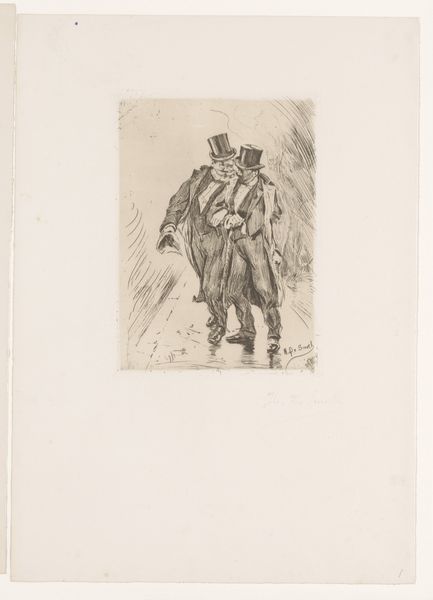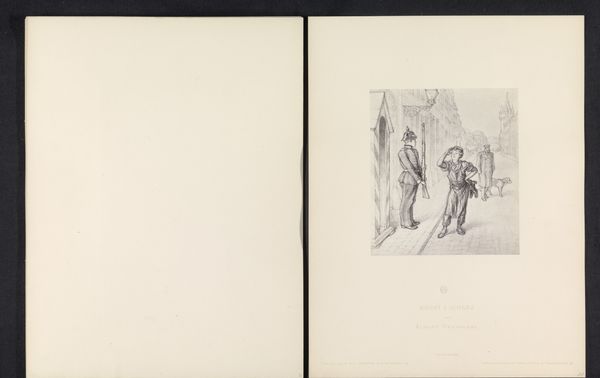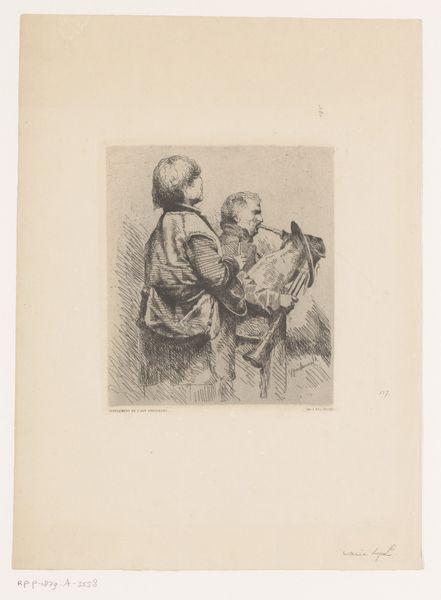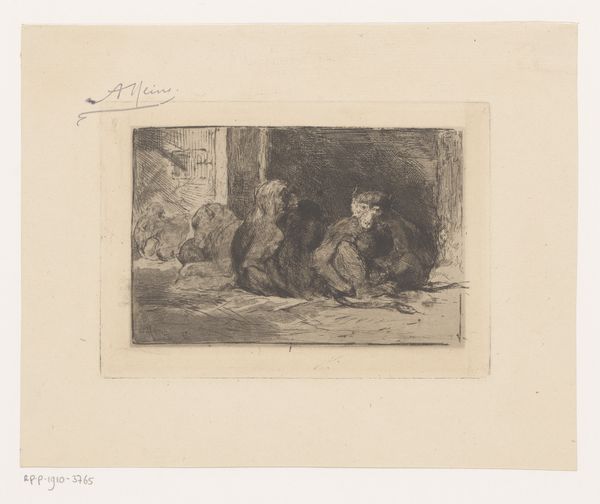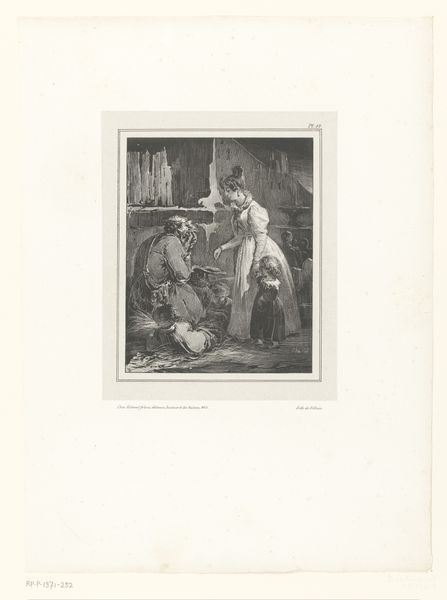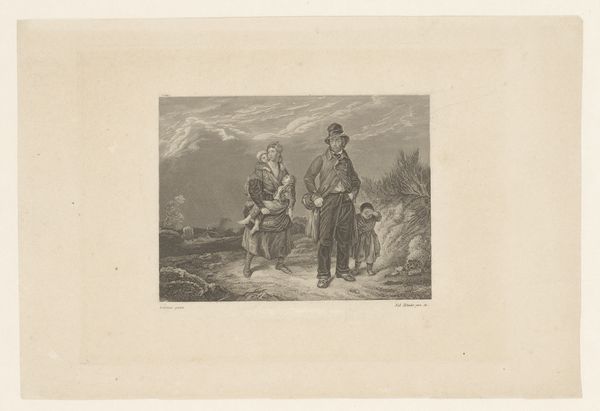
Sheet with Sketch (Grenadier of the Guard, Napoleon in a Bivouac) 1842
0:00
0:00
drawing, lithograph, print, paper, pencil
#
portrait
#
pencil drawn
#
drawing
#
ink drawing
#
narrative-art
#
lithograph
# print
#
pencil sketch
#
paper
#
pencil drawing
#
romanticism
#
pencil
#
history-painting
Dimensions: 155 × 222 mm (image); 165 × 225 mm (primary support); 344 × 453 mm (secondary support)
Copyright: Public Domain
Curator: Auguste Raffet rendered this pencil and lithographic print in 1842, calling it "Sheet with Sketch (Grenadier of the Guard, Napoleon in a Bivouac)." It currently resides at The Art Institute of Chicago. Editor: It’s a somber and rather haunting piece, wouldn't you say? The stark contrasts in the sketch give a very dramatic feeling. Curator: Indeed. Raffet was known for his ability to depict military scenes and the lives of soldiers. There is an interest in showing how grand historical events play out in the individual lives. He gained popularity during the rise of Napoleon's legend after his death, tapping into a growing sense of nationalism and nostalgia for the Napoleonic era in France. Editor: Right, and that melancholic mood certainly resonates. The lone figure of Napoleon, surrounded by the suggestion of a bleak bivouac, has all the hallmarks of Romanticism. The symbols of decay, suggested isolation, hint at Napoleon's own downfall from grace. Curator: His use of lithography made these images easily reproducible and accessible to a broader public, reinforcing the idealization of Napoleon as a heroic figure while simultaneously subtly exploring the cost of such ambition. There’s an important political undercurrent there. Editor: Yes. Note how Raffet uses light and shadow, with an emphasis on darker tones, especially around the Napoleon figure. The grenadiers appear ready for duty but still feel static in their roles. Curator: By presenting Napoleon in this more human light, Raffet was potentially challenging the established glorification of the Emperor and inviting reflection on the personal impact of his campaigns. The lithograph functions on more than one symbolic level. Editor: It’s interesting how this print bridges both popular appeal and introspective reflection. The romantic, solitary imagery evokes a particular kind of sentiment, even patriotism, filtered through the symbolism of decline. Curator: It reveals a complexity of social and historical viewpoints that one might often overlook in popular Romantic portrayals. Thank you for this look, I learned much from that fresh perspective. Editor: The past always carries more stories within stories than we often assume. That’s the appeal of art, to give us access to some of those more intimate perspectives.
Comments
No comments
Be the first to comment and join the conversation on the ultimate creative platform.
